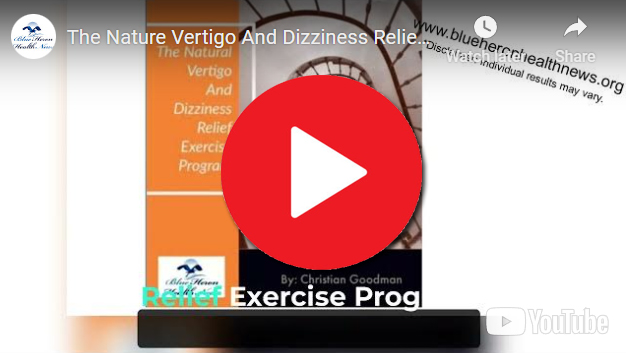
The Nature Vertigo And Dizziness Relief Exercise Program™ By Christian Goodman if you are suffering Vertigo and Dizziness and you are looking for natural solution, then Vertigo and Dizziness Program is here to help you. It will show you very simple but effective exercises that will stop this condition once and fall all. You will start to see positive results immediately when you start following the recommended head exercises and within days, this condition will be a thing of the past. This program is also very affordable and comes with 60 days 100% money back guarantee.
How is central vertigo diagnosed?
Diagnosing central vertigo involves a thorough evaluation by a healthcare provider, who will consider the patient’s medical history, symptoms, and physical examination findings. Since central vertigo can be caused by a variety of serious conditions affecting the brainstem, cerebellum, or other parts of the central nervous system, diagnostic testing is essential for determining the underlying cause.
Here are the key steps involved in diagnosing central vertigo:
1. Medical History
- The healthcare provider will ask about:
- Symptom onset and duration: Whether the vertigo is sudden or gradual, and how long it lasts.
- Associated symptoms: Such as nausea, vomiting, headaches, double vision, slurred speech, weakness, or difficulty walking.
- Previous medical conditions: Any history of stroke, multiple sclerosis, head trauma, migraines, or neurological disorders.
- Family history: Any family history of neurological conditions or vertigo-related disorders.
- Triggers: Whether certain movements or positions trigger the vertigo.
2. Physical and Neurological Examination
- Balance and Coordination Tests: The doctor will assess the patient’s ability to maintain balance and perform tasks requiring coordination, such as walking in a straight line or standing with their eyes closed (Romberg test).
- Neurological Signs: Since central vertigo often involves neurological dysfunction, the doctor will check for any additional signs of brain involvement, such as:
- Weakness or numbness on one side of the body.
- Speech difficulties (dysarthria).
- Visual disturbances, such as double vision.
- Abnormal eye movements (nystagmus), which may be vertical or direction-changing in central vertigo.
- Ataxia (lack of coordination), particularly in movements of the limbs or gait.
- Cranial Nerve Examination: This is to check for any abnormalities in the function of cranial nerves, which may indicate brainstem involvement.
3. Nystagmus Evaluation
- Nystagmus (involuntary eye movement) is a key indicator in diagnosing vertigo. In central vertigo, nystagmus can be:
- Vertical or direction-changing (the direction of eye movement changes depending on the gaze direction).
- Persistent, even when the patient focuses on a fixed object.
- In contrast, peripheral vertigo usually causes horizontal nystagmus that fades with gaze fixation.
4. Imaging Tests
- Magnetic Resonance Imaging (MRI): An MRI of the brain is the most important test for diagnosing central vertigo. It can detect conditions such as strokes, brain tumors, multiple sclerosis, and other structural abnormalities affecting the brainstem or cerebellum.
- Diffusion-weighted MRI is particularly useful for detecting acute ischemic strokes in the brainstem.
- Computed Tomography (CT) Scan: A CT scan may be used in emergency settings (especially if the patient is unable to undergo an MRI) to rule out acute causes like hemorrhages or strokes.
- Magnetic Resonance Angiography (MRA) or CT Angiography: These can assess blood vessels in the brain to identify vascular abnormalities like vertebrobasilar insufficiency or vascular malformations that may be causing vertigo.
5. Blood Tests
- Blood work may be ordered to rule out conditions that could contribute to central vertigo, such as:
- Infections (e.g., viral encephalitis).
- Vitamin deficiencies (e.g., thiamine deficiency in Wernicke’s encephalopathy).
- Electrolyte imbalances or thyroid disorders.
- Autoimmune conditions that may affect the central nervous system (e.g., multiple sclerosis or systemic lupus erythematosus).
6. Electroencephalogram (EEG)
- An EEG may be used in cases where a seizure disorder is suspected as the cause of vertigo. Seizures affecting the brainstem or cerebellum can lead to dizziness or imbalance, and an EEG can help identify abnormal brain wave patterns.
7. Vestibular Testing
- While vestibular testing is more commonly used to evaluate peripheral vertigo, it may still be useful in assessing the vestibular function in central vertigo cases.
- Videonystagmography (VNG) or electronystagmography (ENG): These tests evaluate the eye movements associated with vertigo and help differentiate between peripheral and central causes.
- Rotary chair testing and caloric testing may be used to assess vestibular function, although central causes are less likely to show significant abnormalities.
8. Cerebrospinal Fluid (CSF) Analysis
- In some cases, especially if an infection or autoimmune condition is suspected, a lumbar puncture (spinal tap) may be performed to analyze the cerebrospinal fluid (CSF) for signs of infection, inflammation, or other abnormalities (e.g., multiple sclerosis).
9. Electrophysiological Studies
- In certain cases, such as in neurodegenerative diseases like Parkinson’s disease, electrophysiological tests can help assess the function of the central nervous system. These tests may look for abnormal responses from the brainstem or cerebellum.
10. Referral to a Specialist
- If the diagnosis is unclear or the underlying cause of central vertigo is suspected to be a complex neurological disorder, the healthcare provider may refer the patient to a neurologist, neuro-otologist, or neurosurgeon for further evaluation and management.
Conclusion:
Diagnosing central vertigo involves a detailed medical history, a comprehensive physical examination (including a focus on neurological signs), and several diagnostic tests to identify the underlying cause. MRI is the gold standard for detecting structural abnormalities in the brain, while blood tests and other imaging modalities may be used to evaluate specific conditions such as infections, autoimmune disorders, or vascular abnormalities. Proper diagnosis is crucial, as central vertigo is often associated with serious neurological conditions requiring prompt treatment.

The Nature Vertigo And Dizziness Relief Exercise Program™ By Christian Goodman if you are suffering Vertigo and Dizziness and you are looking for natural solution, then Vertigo and Dizziness Program is here to help you. It will show you very simple but effective exercises that will stop this condition once and fall all. You will start to see positive results immediately when you start following the recommended head exercises and within days, this condition will be a thing of the past. This program is also very affordable and comes with 60 days 100% money back guarantee.